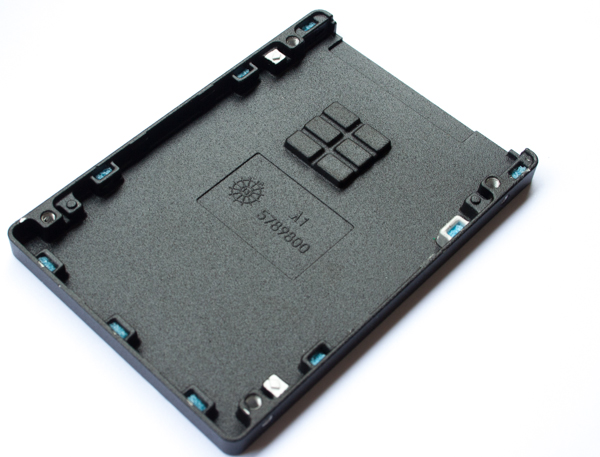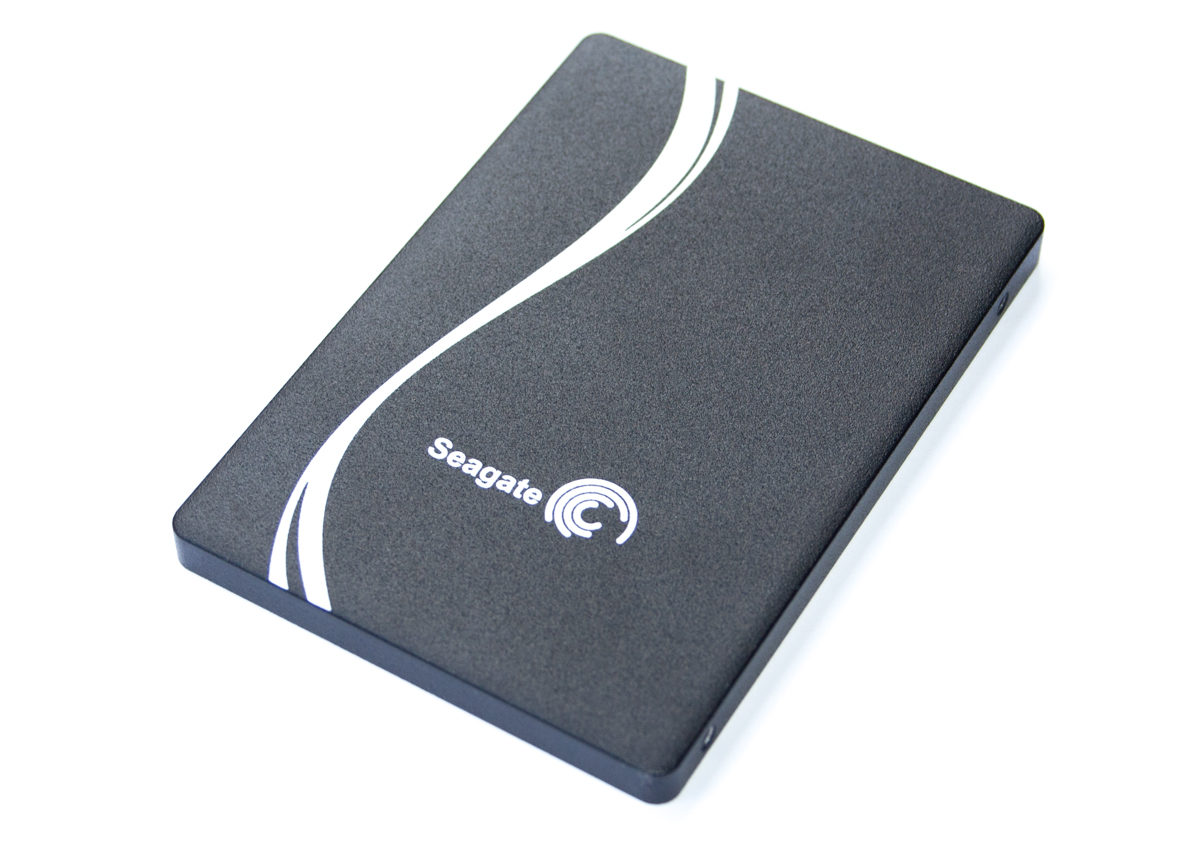Seagate 600 SSD 240 GB Review: LAMD And Toshiba, Together Again
Seagate is the world's largest purveyor of mechanical hard drives. As the company prepares for mortal combat in the consumer SSD space, are its wits, Toshiba's Toggle-mode NAND, and SK hynix memory solutions' 87800 controller enough to get by?
Seagate 600: Mediocre Power Numbers, But Solid All-Around
When you ship tens of exabytes of hard drive capacity every year, the solid-state storage game might seem like small potatoes. Sure, the industry is maturing, and flagging PC sales might give big companies reason to reconsider jumping in with both feet. But Seagate waited for its time to strike, and now that the time is here, the 600 isn't found wanting for much. Sure, you might not get a fancy install kit or a class-leading warranty, but you do get a SSD that vacillates between merely quick and vying for the top spots in our testing.
By some estimates, Seagate will supply 20% of the SSDs used in laptops by 2017. That's a ton of ground to make up in four years, and it's difficult to know whether not owning the fabs or controller IP are going to render those estimates overly optimistic. Strategic partnerships are one thing; vertical integration is another entirely. And those power figures we reported on the previous page certainly aren't going to help in the mobile space.
Otherwise, for its first venture into the consumer SSD jungle, the 600 comes prepared. Considering where SSD technology was just a few short years ago, there have to be a handful of companies envious of the position Seagate is starting from. And the few rough spots we did identify may very well be smoothed out over time.
The fact of the matter is that most 600s won't be sold on the virtual shelves of e-tailers. Instead, they'll be packaged up in bulk and shipped to OEMs and VARs and other alphabet soup organizations. Seagate is less interested in selling you one drive when it can sell thousands to its partners. This is true of most big players, some of which sell their OEM products, unchanged, to consumers. Others have special bills of material and unique product names to differentiate. We like keeping this stuff in mind when it comes time to figure out what force was at work when a vendor made a design decision.
Bottom line: aside from its power consumption, which is among the worst we've seen from a modern SSD, and a goofy limited warranty, there isn't much we can hold against Seagate's standard 600 SSD. Given the right pricing, it could be a go-to in the not-too-distant future. Then again, Seagate isn't talking about how much the 600 is going to cost. We've already see the 240 GB 600 Pro posted at $325 on Newegg, and that probably includes the ubiquitous "new product tax." That's a pretty fair price for a read-oriented enterprise-class SSD. But the garden variety 600 isn't meant for big businesses. The vanilla 600 is for you. Specifically, Seagate says it's for your laptop, though our power measurements lead us to believe better options exist in that space.
It's not immediately obvious that the 600 is worth any kind of premium over the high-end SSDs already available. If nothing else, the 600's chassis is second to none, though that's not a reason to shell out extra ducats for a solid-state drive. Pricing info will help us put things into context the next time we publish a Best SSDs For The Money column. Fortunately, with the state of the industry like it is, there are plenty of other fish in the sea should Seagate want too much for the privilege of owning its first consumer SSD.
Get Tom's Hardware's best news and in-depth reviews, straight to your inbox.
Current page: Seagate 600: Mediocre Power Numbers, But Solid All-Around
Prev Page Results: Power Consumption-
mayankleoboy1 1. Where is the Samsung 840 and 840 Pro ? Samsung 830 is quite old now.Reply
2. I dont get why you use QD greater than 4 in the synthetics. All of thses drives are for PC users, who will rarely get QD even equal to 4.
3.I would have liked more real world tests like : Copying to and from drive, restoring backups, decompressing large ISO files , doing all of the above and then noting the time it takes to open Photoshop,
4. Can you do a pre and post defragment test, just for lolz ?
5. Can you do a test where the windows system is paging on the SSD ? basically a measure of the read/write disc speed when the OS is low on RAM and is using the SSD for pagefile.
6. IMHO, if you use completely incompressible data to check the perf of SSD, you are deliberately biasing against the Sandforce based SSD's. Could you use a better mix of compressible and incompressible data ? The dynamic compression will definitely improve the perf of Sandforce SSD's in real world desktop usage. -
mayankleoboy1 And two more :Reply
1. The time it takes to do a full drive complete error checking (check file errors+recovery of bad sectors).
2. The time it takes for a deleted file to be recovered ,using a third party data recovery freeware. -
kyuuketsuki Not a bad drive at all. However, that warranty nonsense Seagate is trying to pull is enough to make this a definite pass. Not going to support that.Reply -
ryomitomo There's a typo in the chart in the first page. The Max Warranty TBW for 120GB version should read 36.5TB instead of 36.5GB. Otherwise, it is not much of a lifetime write endurance.Reply -
Twoboxer I have no problem with their warranty statement. They are telling you exactly how long its going to last. As long as the device reports where it is along the way, I'll know exactly when to replace it - no surprises.Reply -
Soda-88 I don't see the problem with dual condition warranty. They're just protecting themselves from people who would abuse their SSD with heavy video capturing or something of the sort.Reply -
velosteraptor Soda-88I don't see the problem with dual condition warranty. They're just protecting themselves from people who would abuse their SSD with heavy video capturing or something of the sort.Reply
I dont have a problem with the dual condition warranty either, its a lot like a car; (10 year, 100,000 miles) I think the problem is that they are only giving a 3 year warranty, where almost everyone else in the ssd market has 5 year warrantys, and unconditioned at that. Even if the drive is faster than some of the other models tested here, id feel much safer buying a drive with a longer warranty, knowing its going to be protected for an extra 2 years.
-
raidtarded Almost every SSD manufacturer ties warranties to the amount of writes to the drive, you just have to read the fine print in the warranty. At least Seagate is upfront, most are hiding it until RMA time.Reply -
will1220 raidtardedAlmost every SSD manufacturer ties warranties to the amount of writes to the drive, you just have to read the fine print in the warranty. At least Seagate is upfront, most are hiding it until RMA time.Reply
False. Neither Ocz or samsung have limits on how much data is written on the drive. And their the only two ssd brands worth buying.
-
mapesdhs Please stop using graphs that have non-zero origins! They are incredibly visually misleading.Reply
Such charts are the domain of dodgy advertisers, not tech sites that seek to convey useful
information, etc.
Ian.


